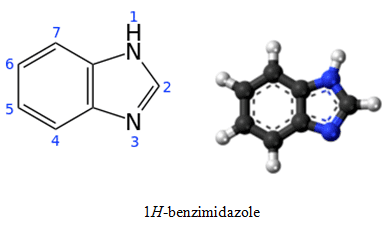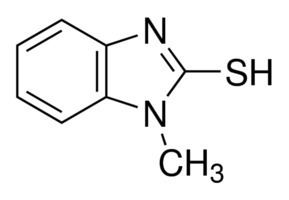Formula C7H6N2 | ||
 | ||
Benzimidazole is a heterocyclic aromatic organic compound. This bicyclic compound consists of the fusion of benzene and imidazole. It is a colorless solid.
Contents
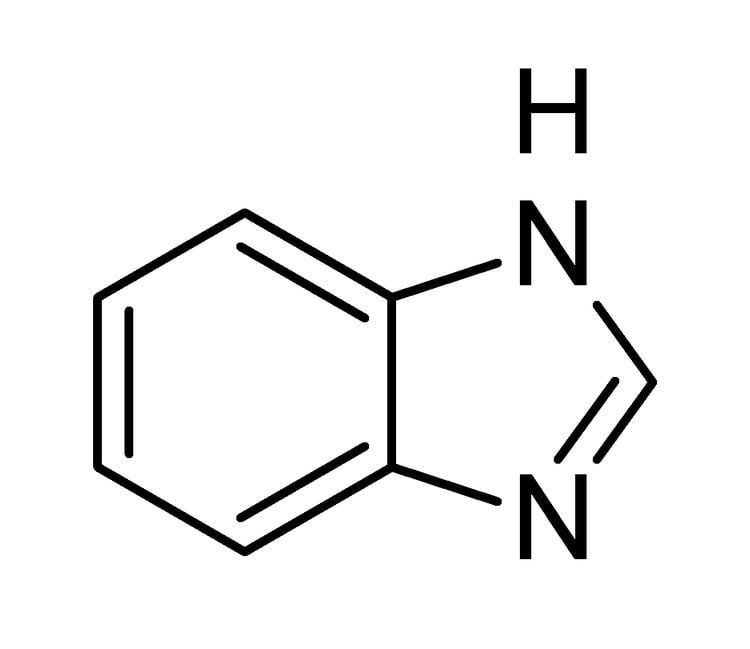
Preparation
Benzimidazole is produced by condensation of o-phenylenediamine with formic acid, or the equivalent trimethyl orthoformate:
C6H4(NH2)2 + HC(OCH3)3 → C6H4N(NH)CH + 3 CH3OH
2-substituted derivatives are obtained when the condensation is conducted with aldehydes in place of formic acid, followed by oxidation.this method afford 2-substituted benzimidazoles.
Reactions
Benzimidazole is a base:
C6H4N(NH)CH + H+ → [C6H4(NH)2CH]+It can also be deprotonated with stronger bases:
C6H4N(NH)CH + LiH → Li [C6H4(NH)2CH] + H2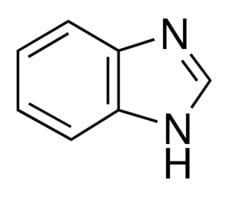
The imine can be alkylated and also serves as a ligand in coordination chemistry. The most prominent benzimidazole complex features N-ribosyl-dimethylbenzimidazole as found in vitamin B12.
N,N'-Dialkylbenzimidazolium salts are precursors to certain N-heterocyclic carbenes.
Applications
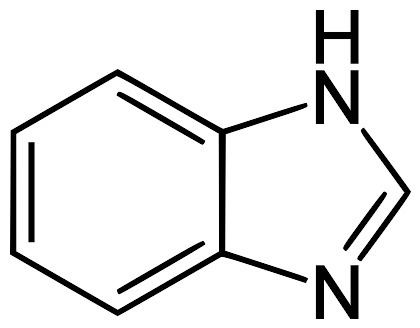
Benzimidazoles are often bioactive. Many anthelmintic drugs (albendazole, mebendazole, triclabendazole etc.) belong to the benzimidazole class of compounds. Benzimidazole fungicides are commercialized. They act by binding to the fungal microtubules and stopping hyphal growth. It also binds to the spindle microtubules and blocks nuclear division.
.
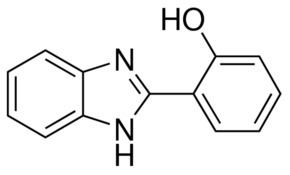
The benzimidazole opioid family includes a number of strong agents e.g. etonitazene, whose article discusses the family in some depth.
In printed circuit board manufacturing, benzimidazole can be used as a organic solderability preservative.
Several dyes are derived from benzimidazoles.
Benzimidazole is involved in the synthesis of the antiandrogen Galeterone.
